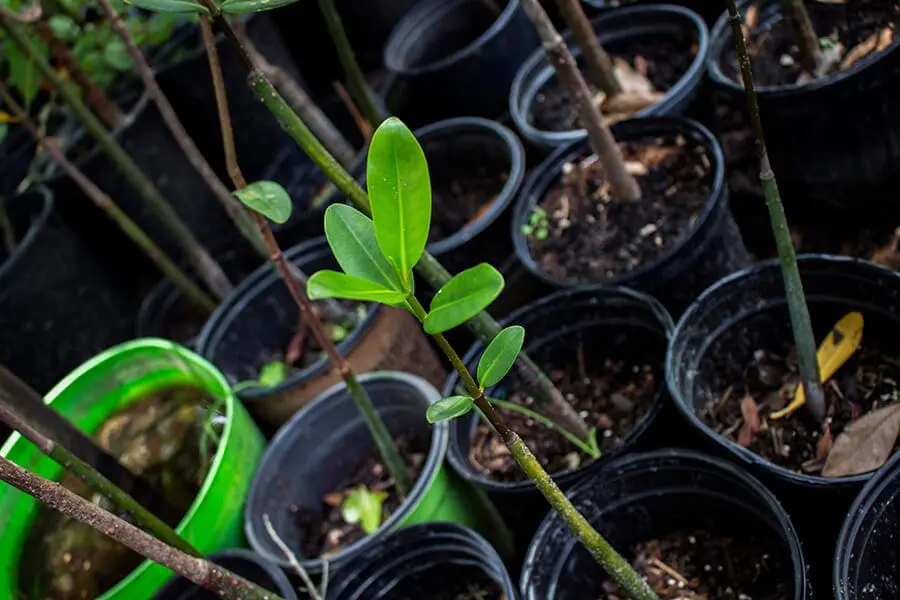

A young red mangrove.
Let’s get to the root of things! The term “mangrove” refers to over 70 different species of tree, three of which make their home right here in the Indian River Lagoon. They are used as breeding grounds for many animals and function as an aquatic “nursery,” using their underwater roots to shelter juvenile fish and invertebrates from predators. The canopies and above-water roots offer foraging and nesting opportunities to land-dwelling and amphibious animals like herons, diamondback terrapins and raccoons.
Mangroves are vital to our survival, too. Their complex root structure prevents coastal erosion by holding the shoreline in place, which is especially handy during hurricane season. They store more carbon than terrestrial forests, significantly reducing the amount of CO2 in the atmosphere.
Unfortunately, mangroves are under pressure throughout the world. Development, pollution, oil spills and overharvesting are contributing to the decline of mangrove habitats. As the frequency and severity of storms increase due to climate change, local mangrove populations suffer, taking several years to recover from powerful winds and waves. It’s estimated one third of the world’s mangrove population has been lost in the past 50 years.
The mangroves in our lagoon are not exempt from these threats, but our Restore Our Shores team is working to bring these trees back. Through our Adopt-A-Mangrove program, volunteers are participating in several workshops throughout the year to learn about and take home “baby” mangroves. These “foster parents” spend one to two years caring for the tiny trees until their roots are big and strong enough to be planted in the lagoon. Working together, we can bring back healthy populations of mangroves to our shores, restoring a sustainable ecosystem for aquatic and coastal animals.